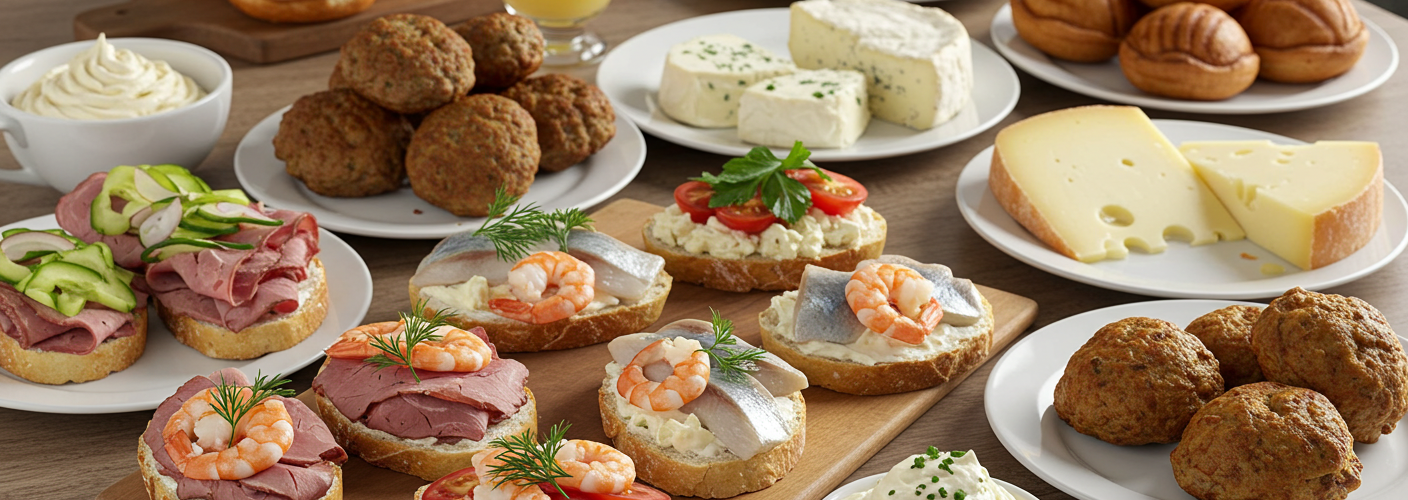Denmark, known for its stunning landscapes and vibrant culture, also boasts a culinary heritage that is rich and diverse. The country’s cuisine reflects a fusion of traditional practices and modern innovation, making Danish food a delightful exploration for both locals and visitors alike.
At the heart of Danish cuisine is an emphasis on high-quality, locally sourced ingredients. The country is surrounded by the North Sea and the Baltic Sea, providing a bounty of fresh seafood that features prominently in many dishes. Fish, particularly herring, is a staple, often pickled or served with onions, and is a key part of the famous Danish smørrebrød, or open-faced sandwiches. These sandwiches are typically assembled on rye bread, topped with a variety of ingredients such as cured meats, cheeses, and vegetables, creating a colorful and flavorful experience.
One cannot discuss Danish food without mentioning the importance of hygge, a concept encompassing coziness and comfort that permeates the dining experience. Traditional Danish meals, often enjoyed in a relaxed setting with family and friends, embrace this philosophy. Seasonal gatherings often feature dishes that bring warmth and connection, such as hearty stews and roasted meats, particularly during the colder months.
In addition to traditional fare, Denmark is at the forefront of the new Nordic cuisine movement, which emphasizes foraging, sustainability, and a deeper connection to local ingredients. This innovative approach has seen a rise in famous establishments like Noma, which has been named the world’s best restaurant multiple times. Chefs at Noma and similar restaurants focus on highlighting Denmark’s unique ingredients, such as fermented vegetables, sea buckthorn, and locally caught fish, presenting them in artful and unexpected ways.
Danish pastries are perhaps some of the most recognized culinary exports from Denmark. Known for their flaky, buttery layers, these treats range from the classic Danish pastry to an assortment of filled varieties like custard, chocolate, and almond. Bakeries across the country craft these delicacies with care, and they are best enjoyed fresh, often with a side of strong Danish coffee.
Street food has also gained popularity in Denmark, with vibrant food markets popping up across cities like Copenhagen. Places such as the Copenhagen Street Food market on Paper Island offer a wide range of international flavors alongside traditional Danish dishes, showcasing the modern culinary scene that celebrates multicultural influences while honoring local traditions.
For those looking to experience Danish food in its natural setting, consider visiting during the annual food festivals celebrated across the country. Events like Copenhagen Cooking & Food Festival and various farmers’ markets highlight the bounty of the region and often feature tastings, workshops, and opportunities to meet local producers. These festivals are a feast for the senses and provide a firsthand glimpse into Denmark’s culinary landscape.
In conclusion, Danish cuisine is a reflection of the country’s traditions, resources, and creativity. From the humble smørrebrød to innovative fine dining, Danish food tells a story of connection to the land and sea, shaped by a culture that values quality and community. For food enthusiasts or anyone looking to explore new tastes, a culinary journey through Denmark promises to be a memorable and satisfying experience.




Add comment